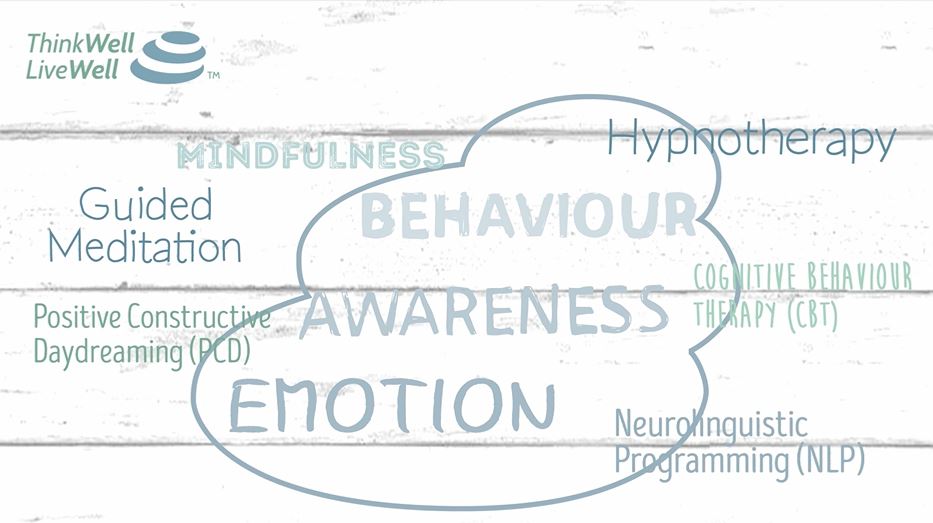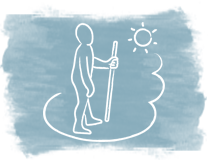
MODALITY USE EXPLAINED
NLP
Neuro-Linguistic Programming (NLP) is actually the result of work by two academics from outside the field of psychology.
In the 1970s linguist John Grinder and mathematician Richard Bandler decided to study people recognised as masters in their field, and to try to codify what in fact made them successful.
The first three people they studied were psychologist and founder of gestalt therapy Fritz Perls, legendary family therapist Virginia Satyr and ‘father of modern hypnotherapy’ Milton Erickson.
This work led Grinder and Bandler to propose the two main constituents of NLP: modelling and the role of language.

Modelling proposes that, by finding what ‘role models’ in any area do to make themselves successful, and then by replicating that behaviour, we can all ‘model’ their success. In ThinkWell- LiveWell methodology, a role model may be an actual person, a character from any field of history, fiction or mythology, or a projection of an ‘ideal’ person or self.
Grinder and Bandler drew convincing connections between the language we use, from individual words to phraseology and construction, and the mindset that informed that choice of language. So – if we manipulate the language, it follows that we influence and eventually re-program the mindset; hence ‘Neuro- Linguistic Programming’.
NLP stresses that we choose much of what happens to us in life. Often unwittingly, we choose how we perceive things and then, based on that perception, how we react. Simplest example: one person can react with indifference to a spider, another can run away screaming – because they choose to perceive the spider differently. Changing the perception will change the response.
How We Use NLP
Our work utilises a wide range of NLP techniques, but our signature use of NLP is carefully interwoven through all of our recordings.
One of the starting points for any NLP practitioner is to assess their client’s sensory filter. We all comprehend the world through a preferred set of filters – which is one of the reasons why perceptions vary so greatly.
ThinkWell-LiveWell takes the time and (considerable!) effort to help you decide your sensory preference and then to address you through that filter.
If you feel that you have mistakenly chosen either the Visual, Auditory or Kinaesthetic filter – you are free to experiment with changing it!
